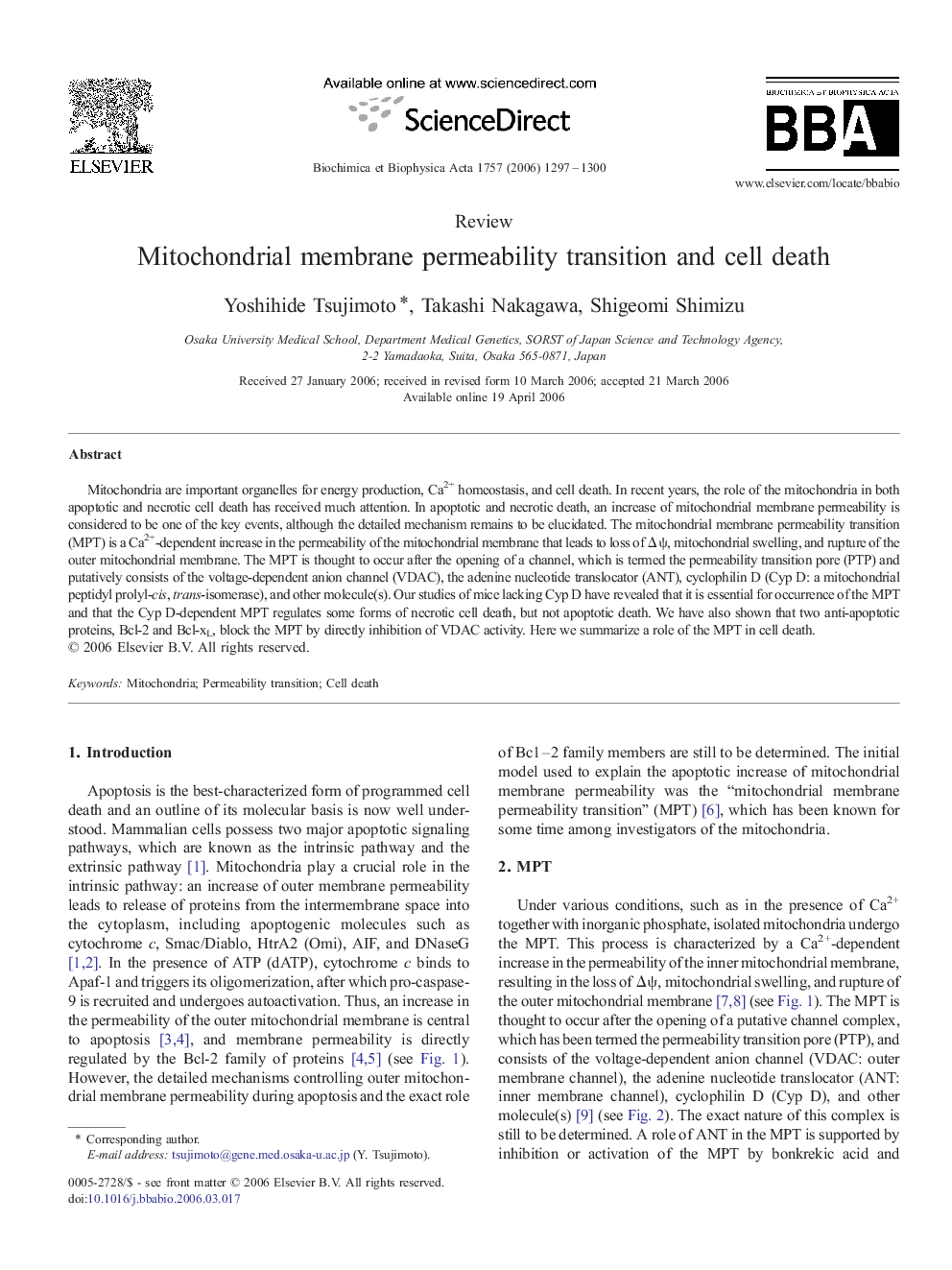| کد مقاله | کد نشریه | سال انتشار | مقاله انگلیسی | نسخه تمام متن |
|---|---|---|---|---|
| 1943834 | 1537055 | 2006 | 4 صفحه PDF | دانلود رایگان |

Mitochondria are important organelles for energy production, Ca2+ homeostasis, and cell death. In recent years, the role of the mitochondria in both apoptotic and necrotic cell death has received much attention. In apoptotic and necrotic death, an increase of mitochondrial membrane permeability is considered to be one of the key events, although the detailed mechanism remains to be elucidated. The mitochondrial membrane permeability transition (MPT) is a Ca2+-dependent increase in the permeability of the mitochondrial membrane that leads to loss of Δψ, mitochondrial swelling, and rupture of the outer mitochondrial membrane. The MPT is thought to occur after the opening of a channel, which is termed the permeability transition pore (PTP) and putatively consists of the voltage-dependent anion channel (VDAC), the adenine nucleotide translocator (ANT), cyclophilin D (Cyp D: a mitochondrial peptidyl prolyl-cis, trans-isomerase), and other molecule(s). Our studies of mice lacking Cyp D have revealed that it is essential for occurrence of the MPT and that the Cyp D-dependent MPT regulates some forms of necrotic cell death, but not apoptotic death. We have also shown that two anti-apoptotic proteins, Bcl-2 and Bcl-xL, block the MPT by directly inhibition of VDAC activity. Here we summarize a role of the MPT in cell death.
Journal: Biochimica et Biophysica Acta (BBA) - Bioenergetics - Volume 1757, Issues 9–10, September–October 2006, Pages 1297–1300